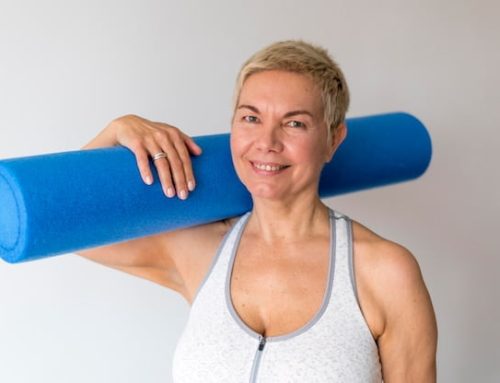Introduction
Foam rolling has become a popular tool for athletes and fitness enthusiasts alike to improve muscle mobility and reduce soreness. But can foam rolling help with arthritis, a condition that affects millions of people worldwide? In this blog post, we will explore the potential benefits of foam rolling for arthritis sufferers and provide some tips on how to use a foam roller safely and effectively.
What is Arthritis?
Arthritis is a medical condition that causes inflammation in one or more joints. It is a progressive disease that can cause joint pain, stiffness, and swelling, making it difficult for people to move around and perform their daily activities. While there are several types of arthritis, the most common types are osteoarthritis and rheumatoid arthritis.
How can Foam Rolling Help with Arthritis?
Foam rolling can help relieve some of the symptoms associated with arthritis. The gentle pressure applied to the muscles and joints can help stimulate blood flow, reduce inflammation, and decrease pain. It can also help improve joint mobility by releasing adhesions and breaking down scar tissue, allowing for smoother joint movement.
What are the Best Foam Rolling Exercises for Arthritis?
Before starting any foam rolling exercises, it’s important to consult with a healthcare professional to get their approval. Here are some of the best foam rolling exercises for arthritis sufferers:
| Foam Rolling Exercise | Benefits |
|---|---|
| Quadriceps Roll | Can help alleviate knee pain and stiffness |
| IT Band Roll | Can help relieve hip and knee pain |
| Calf Roll | Can help relieve foot and ankle pain |
| Upper Back Roll | Can help alleviate shoulder and neck pain |
What to Keep in Mind When Foam Rolling for Arthritis
While foam rolling can be beneficial for arthritis sufferers, it’s important to keep in mind some safety tips to avoid making the condition worse:
- Start slow: Begin with gentle pressure and gradually increase it over time.
- Avoid bony areas: Do not roll directly over joints or bony areas as it can cause bruising and inflammation.
- Focus on muscles: Foam roll the muscles around the affected joints rather than directly on the joints themselves.
- Stop if you feel pain: If you experience any pain or discomfort, stop immediately and consult with a healthcare professional.
Other Ways to Manage Arthritis
Foam rolling is just one of the many ways to manage arthritis symptoms. Here are some other methods worth considering:
| Method | Benefits |
|---|---|
| Low-Impact Exercise | Can help improve joint mobility and reduce pain and inflammation |
| Heat and Cold Therapy | Can help reduce pain and inflammation |
| Weight Management | Can help reduce the pressure on the joints and improve overall mobility |
| Medication | Can help alleviate pain and inflammation, but should only be taken under a doctor’s supervision |
Conclusion
Foam rolling can be a helpful tool for arthritis sufferers to manage their symptoms and improve their mobility. However, it’s important to consult with a healthcare professional before starting any foam rolling exercises and to take safety precautions to avoid aggravating the condition. By combining foam rolling with other management methods, such as low-impact exercise, weight management, and medication, arthritis sufferers can improve their overall quality of life and reduce their symptoms.






